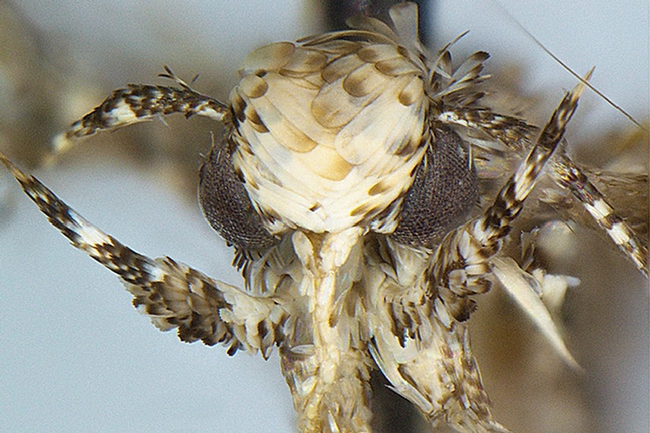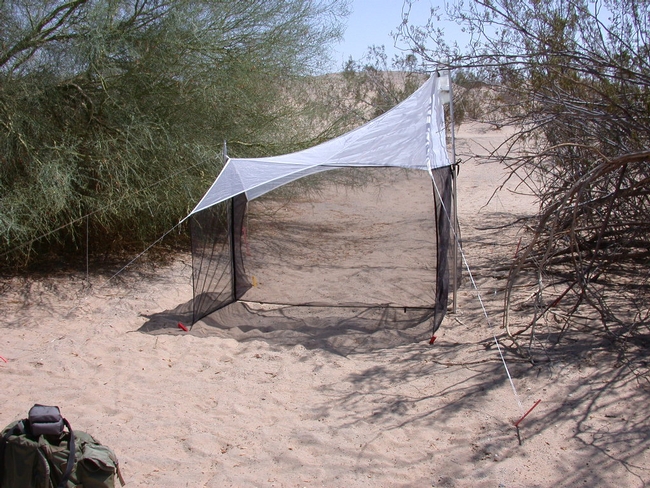- Author: Kathy Keatley Garvey
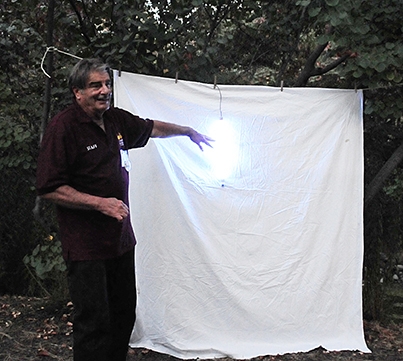
But the most striking: the grape leaffolder, Desmia funeralis.
More than 15 species landed on the blacklighting display at the Bohart Museum of Entomology's Moth Night open house on Saturday, July 22.
Bohart Museum associate Greg Kareofelas and senior museum scientist Steve Heydon set up the blacklighting display: a white sheet and a mercury vapor lighting to attract moths and other flying insects. Kareofelas has trapped night-flying insects in his backyard for more than 25 years.
The event drew some 145 people from 8 to 11 p.m. Most stayed for the entire time, said Tabatha Yang, education and outreach coordinator.
Inside the museum, located in Room 1124 of the Academic Surge Building on Crocker Lane, moths and butterflies took center stage. Visitors expressed amazement at the sizes and colors. Bohart associate Jeff Smith of Sacramento, who curates the butterfly and moth specimens, showed the worldwide collection and fielded questions.
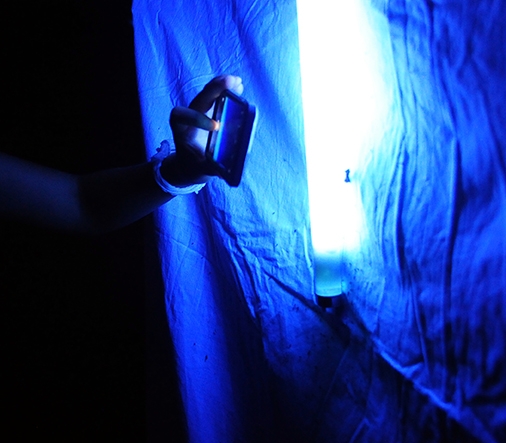
Visitors checked out The Trump moth, Neopalpa donaldtrumpi, is a relatively new species that Bohart Museum scientists collected at Algodones Dunes, bordering Arizona and the Mexican state of Baja California. Evolutionary biologist and systematist Vazrick Nazari of Canada named it donaldtrumpi because the yellow scales on the tiny moth's head reminded him of the hairstyle of Donald Trump, then president-elect.
The Bohart visitors gazed at the photo of President Trump and remarked how tiny the moth is. The wingspan of the orange-yellow moth is less than one centimeter.
Nazari published the piece on the Trump moth Jan. 17, 2016 in the journal Zookeys and explained the name: “The reason for this choice of names is to bring wider public attention to the need to continue protecting fragile habitats in the U.S. that still contain many undescribed species."

Of the Trump moths collected, Nazari kept one in Canada, the norm--but the holotype, the one he determined as the standard for the species--is a permanent part of the Bohart, said Tabatha Yang, education and outreach coordinator.
The Neopalpa donaldtrumpi belongs to the family, Gelechiidae of the Lepidoptera order.
A $75,000 scanning electron microscope, on loan from Hitachi Corp. for research and outreach, drew widespread attention. Youngsters participated in the family craft activity making a moth-shaped window ornament resembling stained glass. The public event was free was the hot chocolate, herbal tea and cookies served.
The next summer open house, also free and open to the public, is Sunday, Aug. 27 from 1 to 4 p.m. the theme is “Bark Beetles and Trees, Forest Health in California." The event is in collaboration with Steve Seybold, USDA Forest Service entomologist and an associate of the UC Davis Department of Entomology and Nematology. He and his students and staff will be there to show displays and answer questions.
The Bohart Museum, directed by Lynn Kimsey, professor of entomology at UC Davis, houses a global collection of nearly eight million specimens. It is also the home of the seventh largest insect collection in North America, and the California Insect Survey, a storehouse of the insect biodiversity. Noted entomologist Richard M. Bohart (1913-2007) founded the museum.
The museum's gift shop, open year around, includes T-shirts, sweatshirts, books, jewelry, posters, insect-collecting equipment and insect-themed candy.
The Bohart Museum's regular hours are from 9 a.m. to noon and 1 to 5 p.m. Mondays through Thursdays. The museum is closed to the public on Fridays, Saturdays and Sundays and on major holidays. Admission is free.
More information on the Bohart Museum is available on the website or by contacting (530) 752-0493 or email bmuseum@ucdavis.edu.
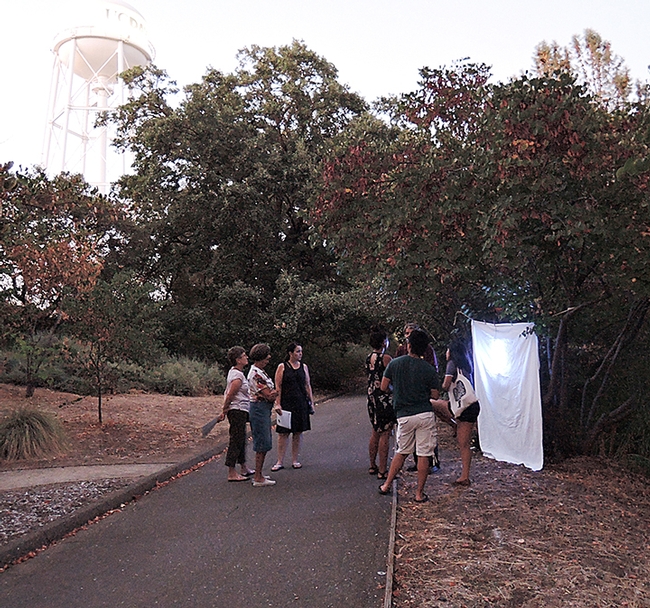
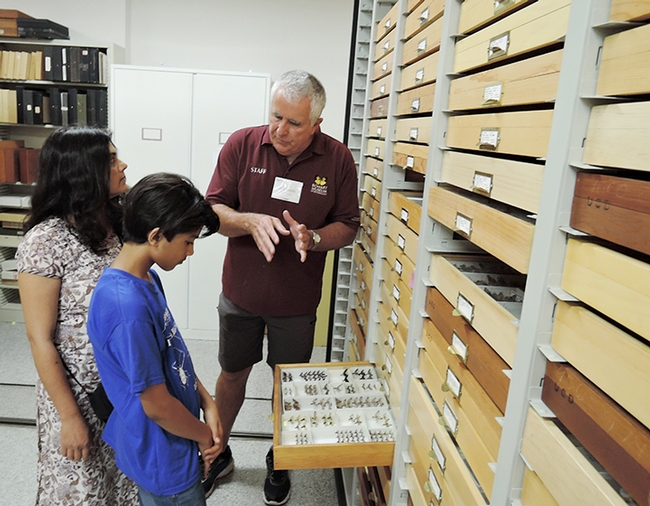
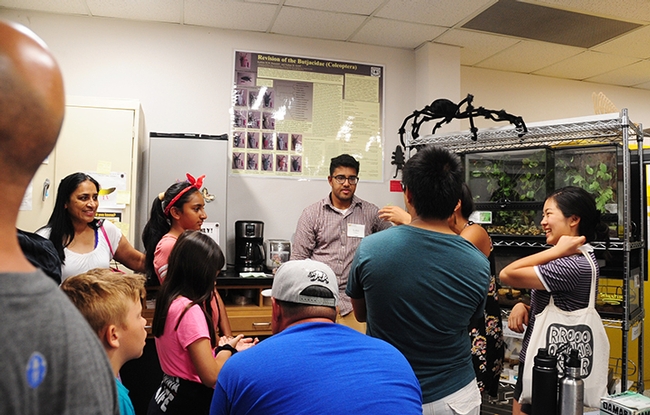
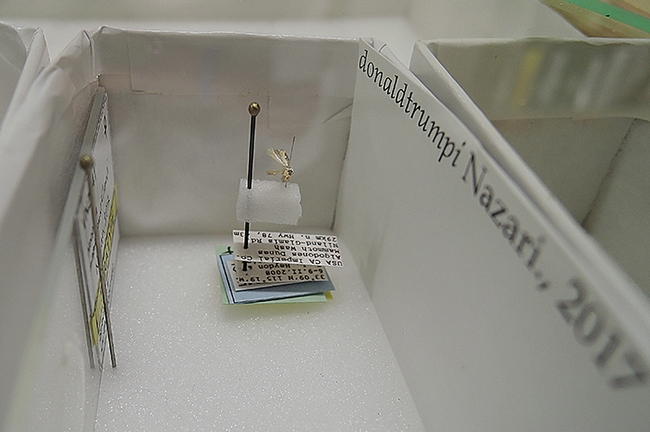
- Author: Kathy Keatley Garvey
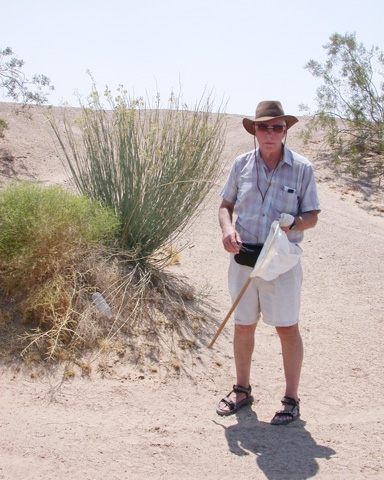
Did you read the abstract published Jan. 17 in the journal ZooKeys about the newly discovered and named moth, Neopalpa donaldtrumpi?
No? Well, you probably read the news story. It went viral.
Somewhat overlooked was the role that scientists at the Bohart Museum of Entomology, University of California, Davis, played. The tiny moth was part of a desert insect collection that the UC Davis researchers loaned to evolutionary biologist and systematist Vazrick Nazari of Canada.
In sifting and sorting through the Bohart specimens, the brightly colored miniscule moth drew Nazari's attention. A new species! The yellow scales on the tiny moth's head reminded him of President-Elect Donald Trump's hairstyle.
Like a moth to a flame, Nazari decided on a name: Neopalpa donaldtrumpi.
Class: Insecta
Order: Lepidoptera
Family: Gelechiidae
Genus: Neopalpa
Species: N. donaldtrumpi
“The reason for this choice of name is to bring wider public attention to the need to continue protecting fragile habitats in the U.S. that still contain many undescribed species,” Nazari wrote in ZooKeys.

Bohart Museum associate/research entomologist Thomas "Tom" Zavortink and colleagues collected the tiny moth with the orange-yellow and brown wings in the Algodones Dunes, bordering Arizona and the Mexican state of Baja California. Tiny? It has a wingspan of less than one centimeter.
"We surveyed the insects of the Algodones Dunes for more than six years with a contract from the U.S. Bureau of Land Management," Kimsey said. "It was a really fun/interesting project. We collected nearly 2,000 species of insects from about 200 square mile of 'sand.' Six percent were new to science. The moth was collected in a Malaise trap in one of the washes on the east side of the dunes."
As for Zavortink, he's been a Bohart Museum associate since 2001. He's a former professor and chair of the University of Francisco Department of Biology. His career also includes research entomologist with the Walter Reed Army Institute of Research, Washington, D.C. He holds a doctorate in zoology from UCLA, where he also received his master's degree.
Zavortink is known for his mosquito identification for vector/mosquito control districts, California Department of Public Health, Latin American culicidologists and professional colleagues, and his bee identification for professional colleagues. He completed and published a survey of the bees of the Imperial Sand Dunes Recreation Area, Imperial County, for the Bureau of Land Management.
One of the bees he's researched is the European wool carder bee (Anthidium manicatum), discovered in New York in 1963 and in California in 2007. (See Bug Squad.)
Naming critters for people--from citizens to celebrities to presidents to other public figures--isn't new. President Barack Obama has nine species named for him (more than any other president). His namesakes include a long-legged, resourceful Northern California spider, Aptostichus barackobamai, and a colorful spangled darner, a perchlike fish, Etheostoma obama.
Having your name associated with a new species is considered an honor, scientists say. It's a permanent legacy, unlike the names of many streets, schools, other buildings, and parks, which can be subject to removal.
But here's a good thing: if you're interested in naming an insect for you or a loved one, the Bohart Museum offers a biolegacy program. For a sponsorship of $2000 (which helps fund the museum's research program), you can select a species for naming, and receive a framed photo and documentation (publication).
The Bohart Museum scientists describe as many as 15 new species annually, and their associates, "many more," Kimsey says. "We could use your help with the selection of new species names in the course of our research."
Some of the insects ready for adoption are pictured here. For more information, email bmuseum@ucdavis.edu or call (530) 752-0493.
